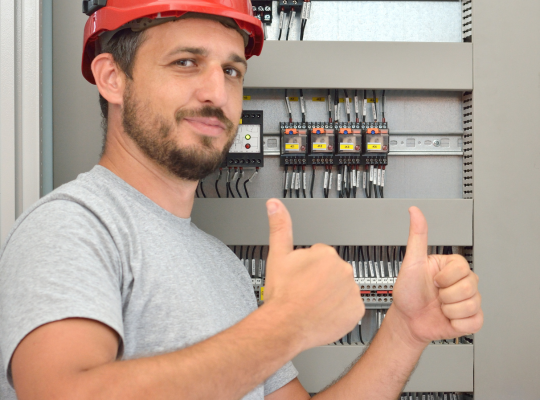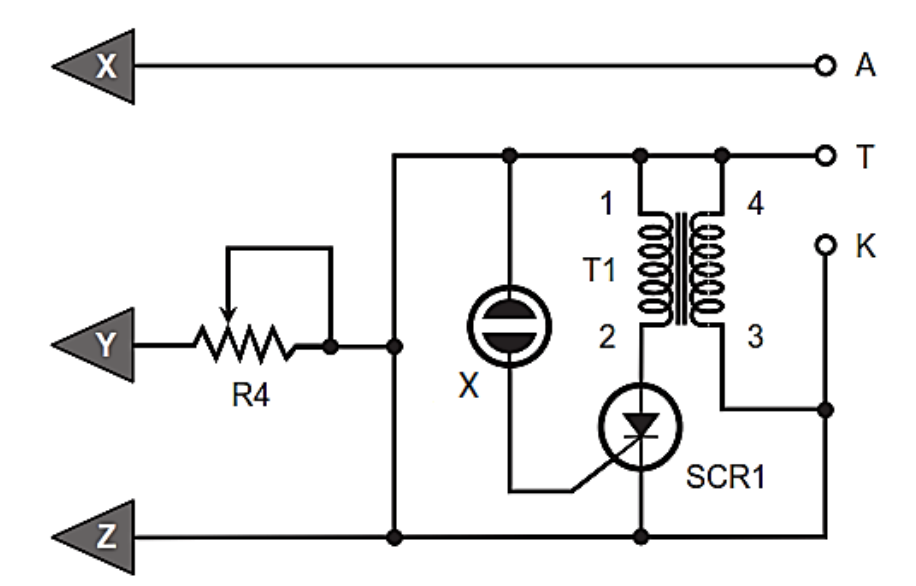Ramsay Electrical Test (2025): Achieve First Attempt Success with Our Prep Course
- Overview
- Sample Questions
- Curriculum
- Reviews
Welcome to our Ramsay Electrical Course, the ultimate resource to help you succeed in the Ramsay Electrical job test. Whether you’re starting as an Apprentice/Entry-level candidate with 0-1 years of experience, progressing as a Trainee with 2-3 years of experience, or already a Journeyman or higher, we have tailored our program to meet your needs. Our comprehensive curriculum is designed to enhance your knowledge and skills at every stage of the test. With our carefully crafted lessons and ample practice materials, you’ll be fully equipped to overcome challenges and showcase your abilities with confidence. Get ready to excel in the Ramsay Electrical job test and take your career to new heights.
We have covered the latest syllabus and each topic in our course is accompanied by a detailed study guide, where we have explained from basic to advance how to solve the questions, formula explanations, etc. We have also added a practice quiz for each topic that you can take after each section, with your results displayed on the screen right away. To further support your preparation, we have included a variety of sample questions, allowing you to familiarize yourself with the format and content of the Ramsay Electrical test. With our combination of study guides, practice quizzes, and sample questions, you’ll have all the tools you need to boost your confidence and excel on exam day.

Complete Ramsay Electrical Prep
Last Updated: Jan 07, 2025
Course Content
-
1Electrical Fundamentals and ConceptsBuy this Course: Get full access to all lessons, practice tests and guides.
-
2Schematics, Print Reading, and Electrical TheoryBuy this Course: Get full access to all lessons, practice tests and guides.
-
3Electrical Equipment and InstrumentsBuy this Course: Get full access to all lessons, practice tests and guides.
-
4Electronics and CircuitsBuy this Course: Get full access to all lessons, practice tests and guides.
-
5Process Control and MonitoringBuy this Course: Get full access to all lessons, practice tests and guides.
-
6Process Control and InstrumentationBuy this Course: Get full access to all lessons, practice tests and guides.
-
7Construction, Installation, and MaintenanceBuy this Course: Get full access to all lessons, practice tests and guides.
-
8Control Systems and AutomationBuy this Course: Get full access to all lessons, practice tests and guides.
-
9Troubleshooting and Problem SolvingBuy this Course: Get full access to all lessons, practice tests and guides.
Ramsay Electrical Test Sample Questions
Print Reading

-
A:
Incandescent Lamp
-
B:
Neon Lamp
-
C:
Diac
-
D:
2-wire Non Polarized Plug
Electric Power
-
A:
27.78%
-
B:
33.33%
-
C:
38.46%
-
D:
44.44%
Explanation:
To find the efficiency of the water heater, we need to compare the useful energy output (dissipated energy) with the input energy (electrical energy consumed). Given: Dissipated energy (output) = 480,000 J, Time = 15 minutes = 15 × 60 = 900 seconds, Voltage (V) = 240 V, Current (I) = 8 A
First, let's calculate the input energy consumed by the water heater: Input energy = Voltage × Current × Time. 240 V × 8 A × 900 s = 1,728,000 J
Next, we can calculate the efficiency using the formula: Efficiency = (Dissipated energy / Input energy) × 100. Substituting the given values: Efficiency = (480,000 J / 1,728,000 J) × 100 = 27.78...%
Series & Parallel Circuits
-
A:
8 Ω
-
B:
9 Ω
-
C:
14.4 Ω
-
D:
22.4 Ω
Explanation:
To find the total resistance in a series-parallel combination, we need to calculate the equivalent resistance step by step.
First, let's calculate the equivalent resistance of the parallel combination (Rpar):
1/Rpar = 1/R1 + 1/R2 1/Rpar = 1/4 Ω + 1/6 Ω 1/Rpar = (3 + 2)/12 Ω 1/Rpar = 5/12 Ω Rpar = 12/5 Ω Rpar = 2.4 Ω
We calculate the total resistance (Rtotal) by adding the series resistor (Rseries) to the equivalent resistance of the parallel combination: Rtotal = Rpar + Rseries Rtotal = 2.4 Ω + 12 Ω Rtotal = 14.4 Ω
Electrical Theory and Control Circuits
-
A:
The circuit is open.
-
B:
The circuit is closed.
-
C:
The circuit state cannot be determined based on the given information.
-
D:
The circuit is in a short circuit state.
Explanation:
In a control circuit with relays arranged in series, the state of the circuit depends on the energization of the relays and the configuration of their contacts.
Given: Relay A and Relay B are connected in series. Each relay has a normally open (NO) and normally closed (NC) contact.
When both Relay A and Relay B are energized, the normally open (NO) contacts of both relays close, allowing current to flow through the circuit. Since the relays are connected in series, the closing of both NO contacts ensures continuity in the circuit, creating a closed path for current flow.
In this scenario, when both relays are energized, the circuit is closed, and current can flow through the circuit.
Electronics and PLC
-
A:
A seal-in circuit is used to ensure the safety of the system by preventing unwanted operation.
-
B:
A seal-in circuit is used to maintain the state of an output coil even after the initiating input signal is removed.
-
C:
A seal-in circuit is used to provide a backup power supply in case of a primary power failure.
-
D:
A seal-in circuit is used to regulate the voltage levels in the control circuit.
Explanation:
A seal-in circuit ensures that the output coil remains energized or de-energized until a specific condition is met or a reset command is received.
The seal-in circuit is designed to provide a holding or latching function for the output coil. When the initiating input signal activates the output coil, the seal-in circuit creates a feedback loop that bypasses the initiating input. This loop allows current to flow through the coil, creating a self-sustaining circuit.
By maintaining the state of the output coil, the seal-in circuit ensures that the associated output device, such as a motor or valve, remains in the desired position or continues its operation even if the initiating input signal is no longer present. This feature is particularly useful in scenarios where a momentary interruption of the input signal should not immediately deactivate the output.
Test Instruments
-
A:
The diode test mode measures the forward voltage drop across a diode.
-
B:
The diode test mode measures the reverse current flow through a diode.
-
C:
The diode test mode measures the capacitance of a diode.
-
D:
The diode test mode measures the inductance of a diode.
Explanation:
A diode is a semiconductor device that allows current to flow in one direction while blocking it in the opposite direction. The forward voltage drop is the voltage required to overcome this blocking effect and allow current to pass through the diode.
In the diode test mode, the multimeter applies a small test current to the diode being tested. By measuring the resulting forward voltage drop, the multimeter can determine the health and characteristics of the diode.
When a diode is forward-biased (correctly oriented in the circuit), it conducts current and exhibits a specific forward voltage drop. The multimeter measures this voltage drop and displays it on the screen, typically in the range of 0.6 to 0.7 volts for a silicon diode.
FAQ’s
Our course is designed to accommodate individuals with varying levels of experience, including Apprentice/Entry-level candidates, Trainees with 2-3 years of experience, and individuals at Journey level or advanced journey levels. The practice questions have been carefully crafted to maintain appropriate difficulty levels that align with each specific skill level.
We offer flexible options for course access, including one-week, one-month, and three-month durations, with corresponding pricing. Upon enrolling in the course, you will gain unrestricted, round-the-clock access to all course materials. This allows you to study at your own preferred pace and convenience, fitting your learning into your schedule seamlessly.
The duration of the course depends on various factors, such as the individual’s prior knowledge, study time dedicated, and learning pace. On average, most students complete the course within 2-3 days. However, it’s important to note that our course is self-paced, meaning you have the flexibility to take as much time as you need to thoroughly grasp the material and feel confident in your understanding. We encourage students to progress at a pace that suits their learning styles and personal commitments.
Certainly! Our course offers dedicated topic-wise practice quizzes, allowing you to evaluate your comprehension and receive instant on-screen results. These quizzes are designed to help you gauge your understanding of specific topics and identify areas that may require further attention. Moreover, we provide an assortment of sample questions to supplement your preparation, further strengthening your grasp of the subject matter.
Yes, we encourage student interaction and offer support throughout the course. You can ask questions, seek clarification, and receive guidance from our knowledgeable instructors through the designated communication channels provided.
While we strive to ensure student satisfaction. If, for any reason, you are not satisfied with the course, please reach out to our support team within the specified refund period, and we will assist you accordingly.

Created by: Michael Lerner
BSc, Psychometric Tutor, Prepterminal Test Expert
7869 students, 4.8, 1409 Reviews
Hey, I’m Michael, PrepTerminal’s Ramsay Electrical Tests expert. I am here to help you with any questions or concerns you may have about the Ramsay Electrical Tests. Feel free to contact me at [email protected].
